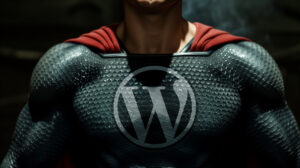If there is one aspect of website project pricing that’s most overlooked, it has to be accessibility. How usable a website is to the blind or vision impaired is not something you would notice unless you need it. Normal use of a website doesn’t reveal how a site is interpreted by screen readers, or how navigation functions using tabs rather than a mouse or touchpad. We don’t notice how effectively images are described with alt tags.
Accessibility requirements vary from project to project. But if your client provides a public service, or is embedded in a large institution, accessibility requirements may be mandated by official policy. But if not—how far you implement accessibility standards is up to the client. But you need to know that the deeper you go with meeting accessibility standards, the more these requirements will impact design, development, and content production costs.
At the most basic level websites should ensure that navigation menus are accessible via tabbing through a page. This is easy to test, just start on any given page and start hitting tab, you should see each item in your menu highlighted with a focus state, and if you hit shift tab you should get a skip menu option. Beyond this most basic accessibility feature, issues like font size, color contrast, and behind-the-scenes labeling of links and images with descriptive alt tags all contribute to a website’s accessibility.
The Website Standards Consortium has an accessibility workgroup which publishes official standards called “The Web Content Accessibility Guidelines” otherwise known as WCAG. There are various levels with subcategories, WCAG 2.0 is the most used and it has A, AA, and AAA sub levels.
So how do these standards impact cost? From a design standpoint all proposed designs and mockups would need to be run through accessibility analysis tools to make sure that text is readable and color contrasts meet those guidelines. This of course adds time, and limits options in the design process. Then, additional time is needed to build navigation systems that function properly with screen readers. From a content production standpoint, every image would have to be given clear verbal descriptions in their alt tags.
And once you enable these features, you also potentially open up an entirely new level of design styling. For example, when you do use your tabs to access menus triggering focus states, do you need to control the appearance of the borders around each of those items, or are browser defaults acceptable? Form elements such as checkboxes and pulldowns also have focus states which can introduce further styling considerations. You can chase these kinds of low level accessibility styling options pretty far down the rabbit hole.
And so asking strategic questions about requirements and preferences, with respect to accessibility, is extremely important for establishing the costs of a project.
For HOLTER Strategic we aim at a WCAG 2.0 level A accessibility out of the box on all our projects. But I still always ask whether a client needs to go beyond that basic standard. And how far they’ll want custom design for those deeper accessibility elements, or whether default browser settings are acceptable.
Well, that brings us to the end of our series on the biggest RFP question of them all—how much will a project cost. But there are many other questions that arise in the website sales process and each one is another to build trust with potential clients.
Next time I’ll pick up questions about search engine optimization, and what aspects can be controlled by the client through their website framework, and what elements of SEO are out of their control.
So until then…
Be Clear. Build Trust. Win Clients.



